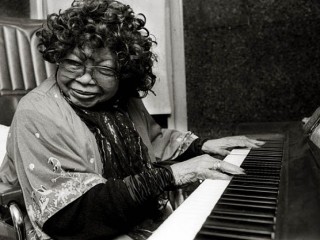
Sippie Wallace biography
Date of birth : 1898-11-01
Date of death : 1986-11-01
Birthplace : Houston, Texas,U.S.
Nationality : American
Category : Famous Figures
Last modified : 2012-03-07
Credited as : Singer-songwriter, The Texas Nightingale, Blues musician
0 votes so far
Sippie Wallace, "The Texas Nightingale," was one of the major blues artists of the 1920s, whose renown as a performer carried well into the 1980s. Wallace was respected as both a blues singer and songwriter. Jon Pareles in the New York Times described her original songs "Mighty Tight Woman" and "Women Be Wise"--which found a new audience with younger listeners in the 1970s--as "earthy and self-assertive blues songs." She is best remembered, however, as one of the foremost interpreters of the blues. Paul Oliver in Jazz on Record called Wallace "one of the major singers in the Classic blues idiom.... Possessing a mellow and tuneful voice, [she] had the qualities of shading and inflection in her singing that marked the classic blues artist."
One of Wallace's specialties was the "shout," a precursor to the modern blues, in which the singer repeats two lines of a song, and improvises a third. Wallace, who frequently sang without a microphone, was influenced by blues great Ma Rainey, yet developed a style all her own. A contributor to The New Grove Dictionary of Jazz wrote: "In her earliest work she attempted to project a vocal weightiness similar to that of Ma Rainey. Later she sang in a manner better suited to the lighter, prettier qualities of her voice, which may be heard to advantage on [the album] I'm a Mighty Tight Woman .... Wallace composed most of her own songs, which are notable for the shapeliness and dignity of their melodies."
Wallace learned music in her father's Baptist church in Houston, where she played the organ and sang gospel music. She was nicknamed "Sippie" because, as Pareles quoted her, "my teeth were so far apart and I had to sip everything." Around 1910 she moved with her family to New Orleans, where Wallace's brother George W., Jr., a professional musician and composer, lived. The family later returned to Houston and while Wallace was in her late teens she began performing with traveling tent shows. She learned blues and ragtime in the shows, in addition to performing in chorus lines and acting in comedy skits. These experiences influenced her contributions as a blues artist. As LeRoi Jones commented in Blues People: Negro Music in White America, Wallace was of a line of distinguished performers who "brought a professionalism and theatrical polish to blues that it had never had before."
In the 1920s Wallace gained a national reputation as a recording artist, working with Okeh Records in Chicago. She recorded a number of solo albums and also worked with jazz greats Louis Armstrong and Sidney Bechet. She continued theatrical touring in the 1920s and frequently worked with another brother, Hersal, a respected jazz pianist. In 1929 Wallace settled in Detroit. In the 1930s she became active again in gospel music, playing the organ and singing for the Leland Baptist Church. Wallace recorded only ocassionally in the 1940s through early 1960s.
Wallace revived her blues career in the mid-1960s at the urging of fellow blues singer Victoria Spivey. In the autumn of 1966 Wallace traveled to Europe with the American Folk Blues Festival, and throughout the rest of the 1960s frequently performed at various blues and jazz festivals in the United States. "Visiting Europe in 1966, ... Wallace astonished by the breadth of her singing and a delivery recalling Bessie Smith," noted Oliver. The same year, her album Sippie Wallace Sings the Blues likewise demonstrated that she still had her touch. A contributor to The New Grove Dictionary of Jazz remarked: "The importance of the present disc ... is that she can still sing these blues.... Her wide range of material and masterful reinterpretations are clearly shown in the efforts 'I'm a Mighty Tight Woman,' 'Shorty George Blues,' and 'Special Delivery Blues.'"
Singer and guitarist Bonnie Raitt broadened interest in Wallace's music when she featured two of the blueswoman's songs on her 1971 debut album. Wallace toured and recorded with Raitt in the 1970s and eighties while continuing to perform on her own. In 1980 Wallace was featured at New York City's Avery Fisher Hall in a salute to prominent blueswomen. New York Times Magazine contributor Ariel Swartley said that Wallace, at 81 the show's oldest participant, offered "her own, still-fresh remedies for heartache." Swartley commented on Wallace's popularity with a new generation of music lovers. "It's one of the program's bittersweet ironies that, of all the performers, it's probably the aging Sippie Wallace who's best known to audiences under 30.... And yet it shouldn't be surprising that a young audience appreciated her--the blues, after all, is the root of both jazz and rock and roll."

















